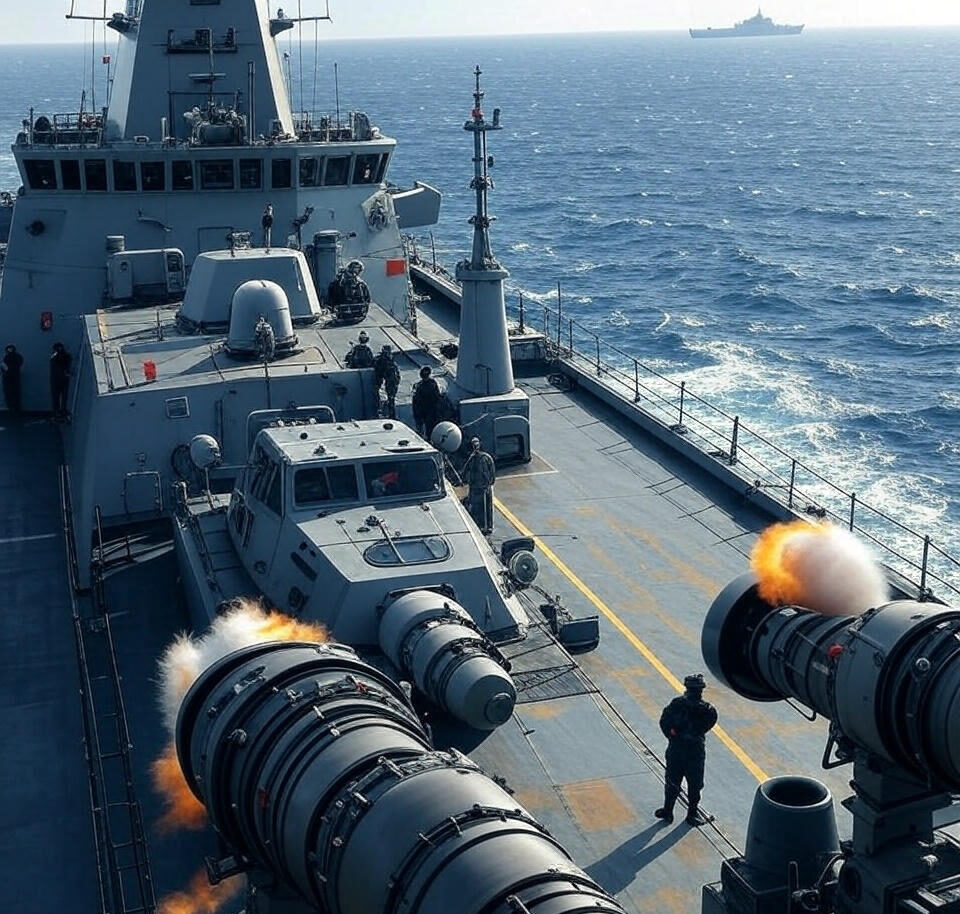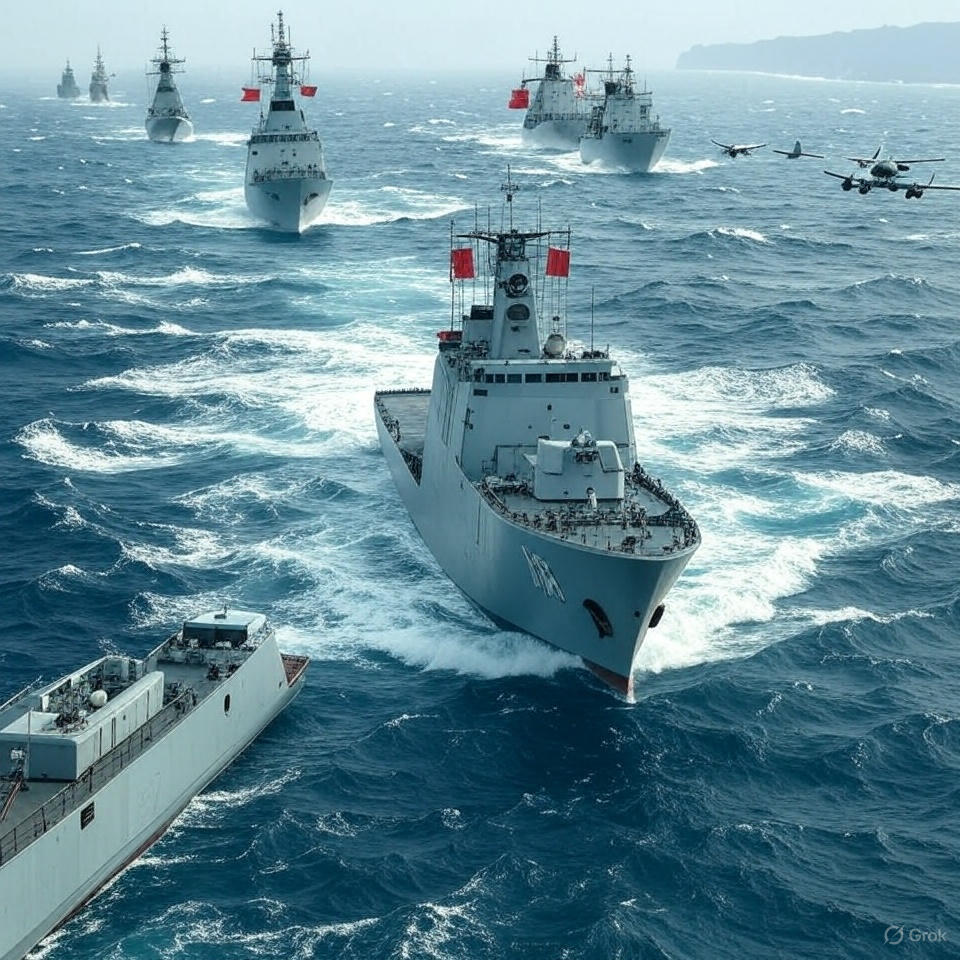In late March and early April 2025, China launched large-scale military exercises around Taiwan code named Strait Thunder 2025A deploying naval vessels, aircraft, rockets, and drones into waters and airspace close to the island, prompting sharp criticism from the United States and Japan.(CBS News)
Scope and Scale of the Drills
- Over two days, the People’s Liberation Army Eastern Theater Command deployed an aircraft carrier group including the Shandong, alongside warships, fighter jets, and rocket forces in a near daily push into Taiwan’s air defense identification zone (ADIZ). In one instance, 24 nautical miles off Taiwan’s coast, the Shandong group practiced simulated air and naval strikes on key targets and ports.(CBS News)
- Taiwanese authorities reported tracking dozens of aircraft sometimes up to 71 and over 20 naval vessels, with many entering Taiwan’s ADIZ. Taiwan deployed its own aircraft, navy ships, missile defenses, and fighters, although no direct clash occurred.(AP News)
China’s Official Justification
Beijing claimed the drills served as a “stern warning” to Taiwan’s pro‑independence leadership particularly President Lai Ching te accusing him of provocative rhetoric and labeling him a “parasite” in state propaganda. The PLA described the exercises as precision targeting drills to deter separatist forces.(CBS News)
Taiwan’s Response
Taiwan’s Ministry of National Defense condemned the maneuvers, calling China a regional “troublemaker” undermining peace. It affirmed its intent to monitor activity closely and mobilize defenses as needed. Taiwan also expanded coast guard military drills to counter “gray zone” threats such as maritime harassment and simulated terrorist actions.(Globedge).
🇺🇸 U.S. Reaction
The U.S. State Department issued a formal statement deploring Beijing’s actions as unnecessarily provocative, urging China to avoid escalating tensions. The U.S. criticized the drills as a disproportionate response and insisted on restraint.(state.gov, Wikipedia)
Separately, Defense Secretary Pete Hegseth visited Tokyo days earlier and announced enhancements to U.S. Japan military coordination, rebranding U.S. Forces Japan into a “war fighting” command to better deter Chinese aggression. Japan and the U.S. also committed to joint weapons development and maintenance cooperatives.(CBS News)
Japanese Response
Japan formally condemned the drills as a grave threat to regional security. Japanese officials emphasized that such actions risked spillover into Japan’s Exclusive Economic Zone, affecting its national safety. During U.S.-Japan trilateral discussions, ministers called for peace and stability across the Taiwan Strait and urged China to desist from coercive tactics.(Wikipedia)
International Context
- The G7 foreign ministers including the U.S., Japan, U.K., Germany, Canada, France, Italy, and the EU issued a unified communique denouncing China’s aggressive maneuvers and reaffirming opposition to unilateral changes to the status quo.(Wikipedia)
- Observers noted these drills seemed designed to test U.S. and allied response thresholds, possibly timed to precede a potential summit between Xi Jinping and Donald Trump.(Focus Taiwan , CNA English News)

Strategic Implications
- For China, the maneuvers underscore growing assertiveness and willingness to project power in highly sensitive areas of the Indo Pacific. The deployment of carriers like the Shandong close to Taiwan and at risk flashpoints was notable.(Wikipedia)
- For the U.S. and its allies, the drills reinforced the urgency of enhancing interoperability, defense posture, and regional deterrence capabilities. Hegseth’s military upgrades and missile procurement plans reflect strategic shifts.(CBS News, Wikipedia, Newsweek, The Wall Street Journal)
- For Taiwan, the pressure has spurred its largest ever Han Kuang drills, civil defense preparedness and integration of coast guard military coordination all to signal readiness and resilience.(thetimes.co.uk)
Summary
China’s Strait Thunder‑2025A drills around Taiwan in early April 2025 represented a bold show of force that alarmed regional democracies. Taiwan, backed diplomatically and strategically by the U.S. and Japan, condemned the exercises and strengthened its defense readiness. Washington responded by reinforcing alliance structures and military partnerships. Japan similarly voiced strong objections and joined broader international efforts to uphold stability. The episode highlights escalating tensions in cross‑strait relations and the high stakes of great‑power competition in the Indo Pacific.

